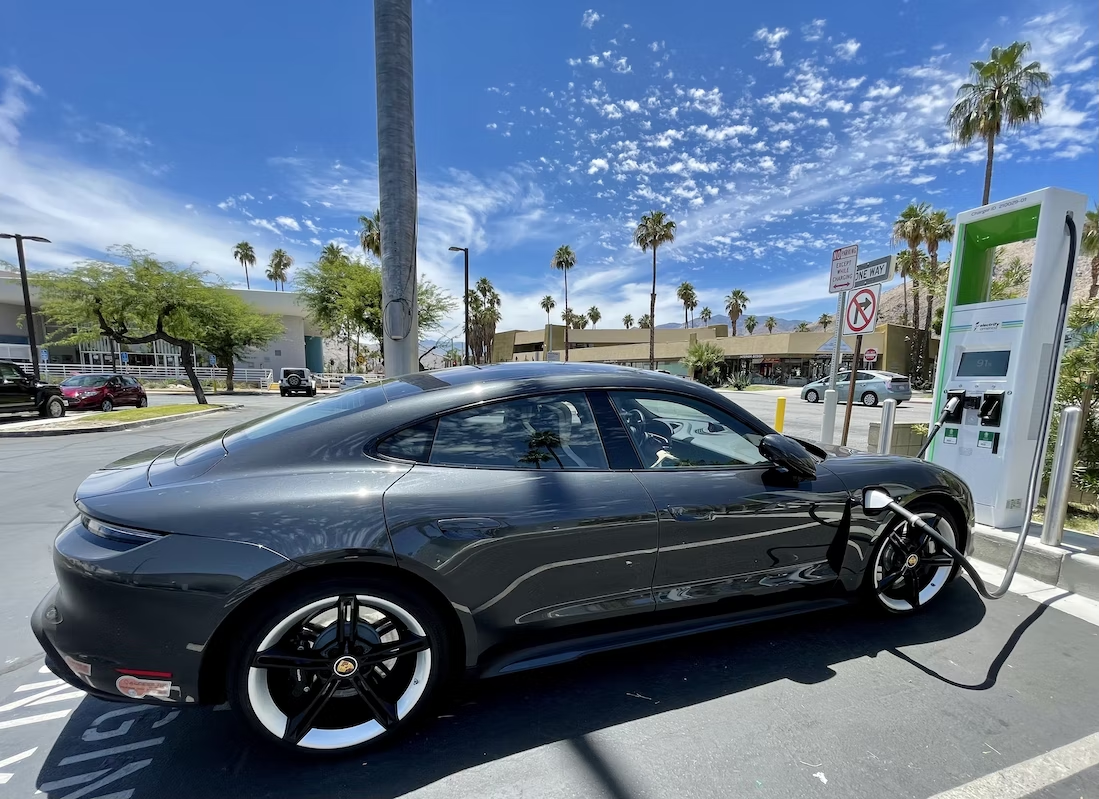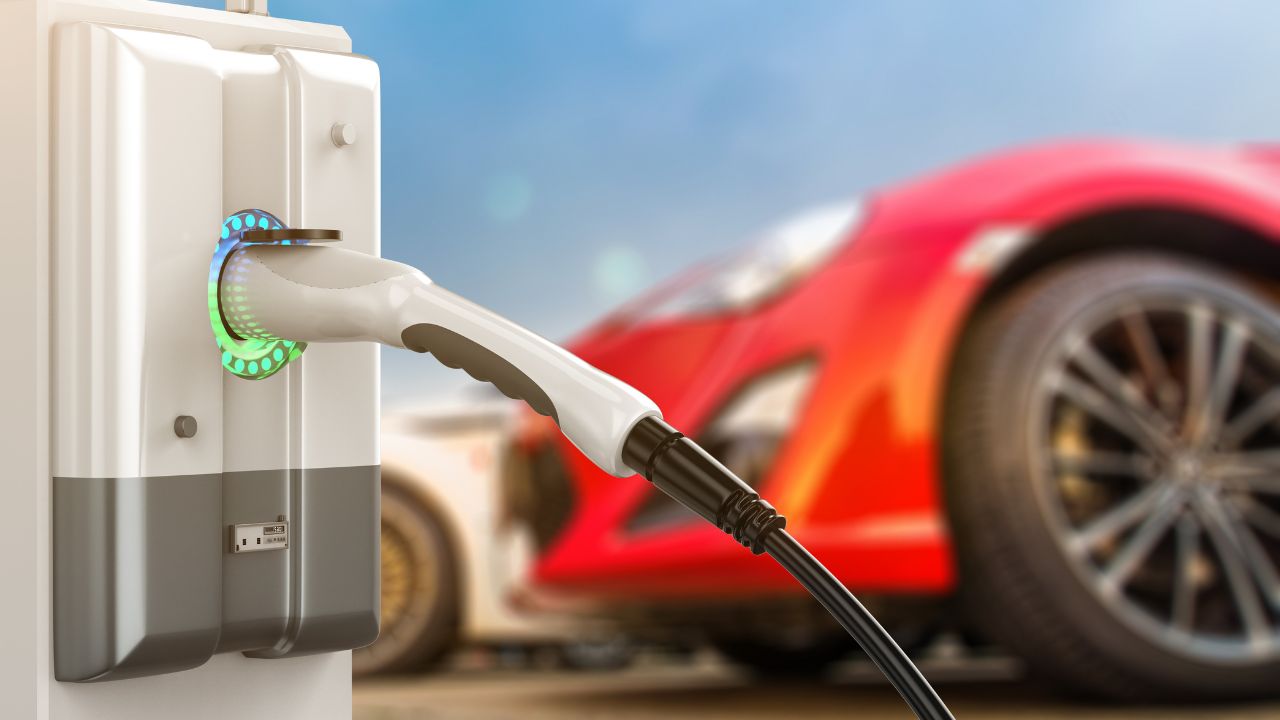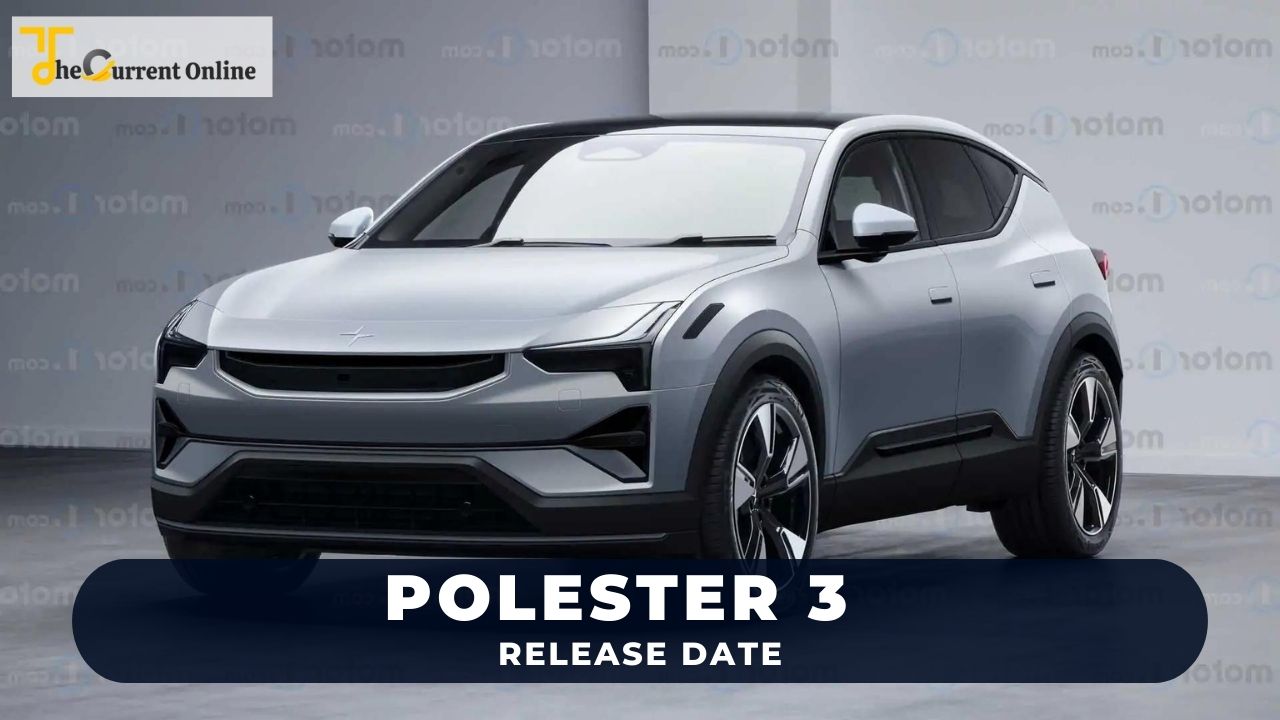As an engineering student, you have multiple projects for innovative and electrical hands-on activities that will help you develop your skills. These assignments help you develop analytical and problem-solving skills. The projects also prepare you for the job market by testing your ability to apply knowledge in a practical setting and come up with solutions to real-world problems.
Engineers tackle new challenges every day. So, if you’re feeling overwhelmed thinking about all the different things that you need to learn and do as a student, just know that it gets easier once you get used to it. Here are the best examples of electric vehicle projects for engineers to get you started.

1. Electric Vehicle Charging Station
An EV station is used to maintain EV batteries. The station supplies voltage from the line or panels at home or for public use.
Prototype of a Fast Charging Station
This model demonstrates the concept of a fast transfer station. This station can deliver high voltage to refuel an electric automobile quickly. It’s based on a three-phase connection, a thyristor-modified rectifier, and a transformer.
For the best environment friendly project, let’s understand how it works: it involves an AC/DC/AC three-phase connection to supply voltage from the network to supply the generator. The DC link has a thyristor rectifier (SCR) to divert the AC from the main supply to generate DC through the transformer.
Solar Charging Stations
A PV station works exactly like a PV station for a residential building. The only difference is that this type of station must be built to supply high alternating volts.
Let’s understand how it works: it involves photovoltaic panels, a voltage regulator, and batteries. The panels generate electrons from sunlight that is connected to the electronic board. It monitors the voltage flow in both the panels and the batteries. When the batteries are charged, it diverts the incoming voltage to the batteries.
Energy Management for Vehicle to Grid Integration
EVs connect to the network through the service panels. When the batteries are depleted, it draws juice from the source to replenish them.
Let’s understand how it works: it involves a station system, a service panel, and an EMS. The service panel receives volts and supplies them to the accumulator. It manages the flow by receiving data.
2. Electric Vehicle Inverter
An EVI is a machine that converts DC to AC via an AC/DC/AC three-phase machine.
SVPWM Inverter and Modes of Operation for Switching Loss Minimization
Switching voltage-source controllers are used to regulate sources for various industrial, commercial, and residential applications. This can help you understand the device’s theory, construction, implementation, and application in electronics.
Jason Kaiser, an engineer and a writer for PapersOwl, highlights: “You can explore the switch and its relationship to the degradation in the switching devices. This teaches you how the techniques are applied to electronic devices to minimize consumption.”
Multilevel Inverter
This device converts direct voltage (DC) to alternating voltage (AC). It’s useful for applications where you want to use DC to load a capacitor for re-use and convert it to AC for running a generator.
Let’s understand how it works: You will learn about the basics and use of multi-level transformers in this experiment. And then use this information to better understand the theory, construction, and implementation of multi-level rectifiers for EV applications.
Bidirectional Converter for Regenerative Braking
This device converts DC to AC and back to DC again. The DC from the batteries is converted to AC and fed to the l wiring.
Let’s understand how it works: The idea involves building a device connected to the main supply and the batteries. The converting device has three-phase AC input and DC output. It is connected to the batteries and the mains. When the batteries are filled, the circuit takes AC and stores it as DC in the batteries.

3. DC-DC Converter
A DC-DC switch is a machine that converts DC to DC of a different voltage or frequency. The single-phase adapter converts 12 V to 5 V, whereas the three-phase device converts 230 V to 12 V or vice versa.
Cooling System Design for Dc-Dc Converters
These are used in panels, and distribution connections require cooling to function optimally. These components are enclosed in an airtight enclosure and are cooled using an external cooling device.
Let’s understand how it works: it involves developing a cooling system for the three-phase DC-DC transformer. It uses heat transfer modes and involves conduction, convection, and radiation. The ambient temperature, voltage, and wattage must be considered when creating it.
Dc-Dc Converter for Solar-Powered Electric Vehicles
A photovoltaic is connected and receives juice from the network to operate the batteries. The photovoltaic also sends current to the network when fully loaded with batteries.
Let’s understand how it works: it involves building a DC-DC adapter that is connected to the network and batteries. It has a three-phase AC input and DC output. Then it is connected to the panels to receive voltage from the utility and replenish the batteries.
Dc-Dc Converter for Vehicle to Vehicle Charging
A station connects through a short-range wireless connection. The two are connected using a DC link, and the adapter receives juice from the mains.
Let’s understand how it works: it involves building a DC-DC switch connected to the network and batteries. The device has three-phase AC input and DC output. It is then connected to the batteries and the main supply. When the batteries are fully loaded, the device takes energy from the network and sends it to the other EV through the transmission link.
4. Vehicle Control Unit
These are the brains of any automotive engine. In these engineering project ideas, we can learn how to translate the input from the sensors and perform the necessary calculations to activate the actuators, which do what we want them to do.
Optimal Energy Utilization of EV Using VCU
Specifically, this computer monitors the flow to the capacitor and motor to regulate the speed and torque.
Let’s understand how it works: it is possible for them to be programmed in a way that optimizes the efficiency and utilization of an automobile. An optimization model can be developed to ensure maximum distance is achieved with a fixed amount of effort.
A Control Strategy to Minimize Energy Loss in a Passenger Car
Most of the voltage loss occurs due to resistance in the wires and the contacts. So one way to minimize waste is to reduce the wattage flowing through the wiring by using thicker wires and using better quality contacts.
Let’s understand how it works: The process can be set up using a flow sensor to sense the voltage and a breaker to shut off the power if it exceeds a certain limit.
Power Split Strategy Using Fuzzy Control in a Hybrid
When driving in the city, where the motor stops and starts frequently, hybrids can be an effective option.
Let’s understand how it works: a fuzzy model for force split can be used to determine the necessary torque required for acceleration and braking. It can be designed with input variables like speed, pedal position, and desired speed.
5. Battery Management System
A BMS is a computerized system that monitors and manages a renewable SOC and SOH, such as a lithium-ion in an automobile.
State of Charge Estimation for an Electric Vehicle Battery
A SOC estimation is used to determine the voltage level in the cell based on the amps drawn from the source and the voltage across the terminals.
Let’s understand how it works: a model can be created using the information obtained from the BMS by measuring the voltage across the terminals and the volts flowing through the cell. In this case, knowing the available SOC enables drivers to optimize usage, plan future journeys accordingly, and monitor maintenance needs.
State of Health Estimation for an EV Battery
SOH estimation is used to determine the device’s condition based on the SOC, the rate of change in SOC, and the amount of drain that has occurred.
Let’s understand how it works: these projects can be used to test the cell’s performance based on the SOC and voltage across the terminals. Batteries used in an EV are prone to overheating due to their enclosed cabin space with no direct access to outside air; this makes monitoring heat exposure extremely important. Using artificial intelligence (AI) techniques for computer vision and pattern recognition, you can estimate the SOH of a device.
Strategies for the Long Life of Electric Car Battery
Batteries’ conditions and strategies for extending their longevity are important for engineers. These strategies include monitoring the device’s SOC, temperature monitoring, amp limit, and voltage limit.
A voltage regulation algorithm can consider the temperature and SOC to prevent it from being flooded. In a similar manner, a draining algorithm can be designed to prevent it from being over-flooded by considering its SOC.
To Sum Up
Engineers design solutions to various problems. And electric vehicle project ideas are a great way to develop these skills and expand your knowledge base, especially for kids. You can explore various technical fields with them, gaining the experience you need to pursue a profession in this field.
Engineering projects ideas require thorough planning and execution to complete successfully. You can use one of these tips as a starting point while keeping these things in mind will help you develop skills and contribute to the professional community. You’ll be making your future self proud, too!



